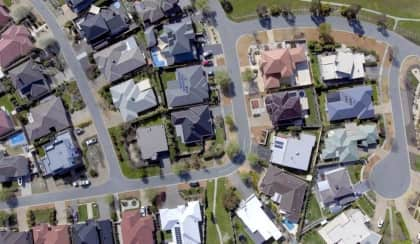Rising rates the cause of halved new home sales: HIA
A new report has blamed the rapid rate cycle for the continued fall in new home sales across the country and warned more declines will come.

Housing Industry Association (HIA)’s New Home Sales report, a monthly survey of the largest volume home builders in the five largest states, showed new home sales fell 12.8 per cent in January.
The latest monthly decline left new home sales in the previous three months down by 46.7 per cent compared to the same period last year.
NSW bore the brunt of the declines during the latest quarter, with new home sales in the state falling by 73.1 per cent.
New home sales also fell in Queensland (-53.9 per cent), Victoria (-41.6 per cent), and Western Australia (-21.7 per cent).
South Australia continued bucking the downward trend, with new home sales in the state rising 2 per cent.
Tim Reardon, HIA’s chief economist, said sales of new homes have stalled in recent months as the Reserve Bank of Australia’s (RBA) rate hikes continue to adversely impact market confidence.
Following its cash rate decision in February, the central bank has now pumped up interest rates in the country for the ninth consecutive month to 3.35 per cent, as it continues to struggle to reign in the surging inflation within its 2 to 3 per cent target band.
Notably, the RBA retained its hawkish outlook for its policy at the end of its latest board meeting, citing the stubbornness of inflationary pressures and increased potential for huge wage jumps.
Mr Reardon cautioned there is no indication that the market has reached the bottom of this cycle with sales falling in all states, noting that the latest increase in the cash rate in February will likely see sales “fall further”.
“Without an improvement in access to finance or a lowering of rates, building activity will start to contract from late this year.
“Many buyers have been forced from the market by the higher rates, but even those buyers unaffected by the RBA’s actions are unwilling to purchase given the economic uncertainty,” he stated.
The economist also noted the “long lags” in the cycle due to the large volume of building work underway, which will eclipse the impact of the rate hikes on the wider economy.
“There is a risk that once the contraction in home building occurs and slows activity across the rest of the economy, that it will prove difficult to stop,” he said.
Mr Reardon further argued there’s no need for the RBA to “crush the economy” in order to put inflation under control.
“The supply chain disruptions that caused the high inflation in recent years are easing for reasons unrelated to the RBA’s action,” he said.
Instead, he called on policymakers to focus on utilising “other tools to address inflation” and not just interest rates, which he described as a “poor tool for addressing inflation and fiscal policy measures have been shown repeatedly to be better at managing the risks of embedded inflation”.
“The RBA isn’t going to return the economy to stability by putting the building industry through boom-and-bust cycles,” he concluded.
Recently, RBA governor Philip Lowe defended the central bank’s rate hike cycle.
During the Senate Economic Committee on Wednesday (15 February), Mr Lowe stated that the RBA was not trying to “smash” the economy into a recession with its policy direction and that a “narrow path” to a soft landing was available if wage rises stayed reasonable.
He highlighted that while the risk of a spiral of wages driving up prices and then prices driving up wages was relatively low, if it happened, the costs would be high.
